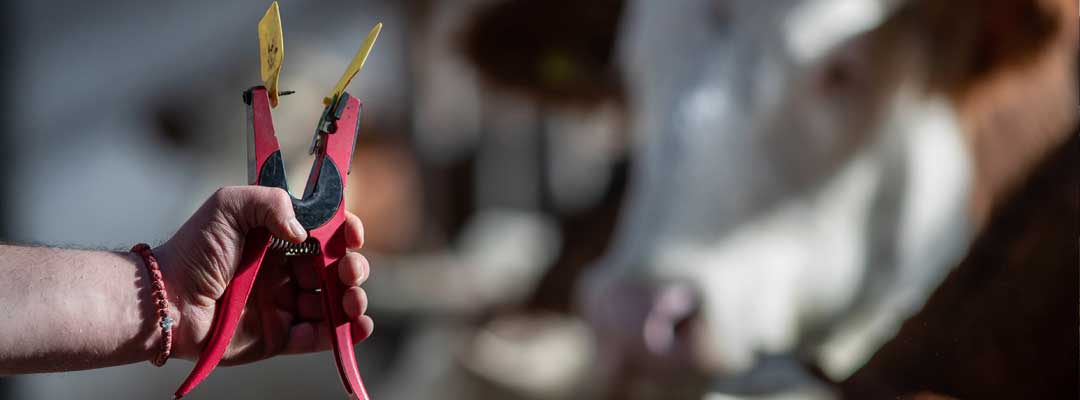Applying Cattle Ear Tags: 3 Questions, Answered
Are you applying cow tags correctly?

There’s a right and a wrong way to apply cattle ear tags for effective cattle ID.
- What are cattle ID tags, and why is cattle ID important?
- What do cattlemen need to apply cattle ear tags?
- What are tips to help effectively apply cattle ear tags?
Tony Hawkins, DVM, Valley Vet Supply technical service veterinarian, explained how awareness of individual animal treatment is essential for record-keeping purposes.
“Common variables to track include body condition scoring, calving date, ease of calving, weaning weight and average daily gain, milk production, vaccination/processing date and products used, and tracking animal health and treatments. These records allow producers to make appropriate management decisions, such as targeted nutrition groups or culling,” says Dr. Hawkins.
A plastic cattle ear tag is the most common method of cattle id animal identification. There are many options available: colors, retention method, numbered vs. blank, engravable, electronic ear tag identification (EID), also referred to as radio frequency identification (RFID) or rfid cattle tags -- the list goes on, Dr. Hawkins outlined.
Ear tags for cattle are convenient, relatively inexpensive, and can be read from a distance.
Ear tag(s) of choice
Correct applicator
Tag removal knife
Pen (for blank tags)
Chute
Disinfectant solution
Halter
(You can find all of this at ValleyVet.com.)
Make sure you have the correct ear tag applicator, recommends Julia Herman, DVM, MS, beef cattle specialist veterinarian with the National Cattlemen's Beef Association (NCBA). “There are many styles of ear tags and they each have their own applicator. Confirm you have the correct applicators for the tag you are using before herd work.”
“Clean ears are ideal. Placing a tag in a muddy ear could introduce dirt or bacteria into the site. This can cause an infection or abscess, and the tag could fall out later,” explains Dr. Herman.
Place tags into the middle third of the ear; between the upper and lower ribs is the strongest part of the ear. This will prevent tags from being ripped out when cattle end up in the brush or trees.
RFID cattle tags are easiest when read with a stick reader or wand but can still be read if animals are properly restrained. Wands allow fast reading and data management. Ensure the button is on the inside of the ear and the visual panel is on the outside of the ear when applying.
Another common form of cattle identification includes the cattle ear tattoo; learn more about ear tattooing in cattle.
Continue learning about cattle ear tags, by reading:


